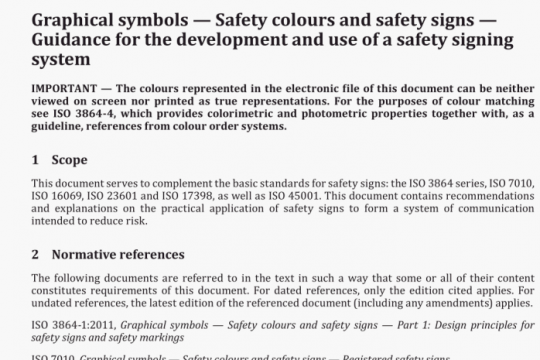ISO 10993-23 pdf free download
ISO 10993-23-2021 pdf free download.Biological evaluation of medical devices – Part 23: Tests for irritation.
5.2 Types of material
5.2.1 Initial considerations
It shall be taken into consideration that during manufacture and assembly ofmedical devices, additional chemical components can be used as processing aids, for example, lubricants or mould-release agents. In addition to the chemical components of the starting material and manufacturing process aids, adhesive/solvent residues from assembly, sterdant residues or reaction products resulting from the sterilization process can be present in a finished product. Whether these components pose a health hazard/risk depends on the leaching or degradation characteristics of the finished products. These components shall be taken into account for their potential irritation activity. The following types of materials are often used in medical devices and could introduce risks for irritation.
5.2.2 Ceramics, metals and alloys
These materials are normally less complex than polymers and biologically derived materials in terms of the number of chemical constituents.
5.2.3 Polymers
These materials are normally chemically more complex than ceramics, metals and alloys in terms of composition. A number of reaction products, impurities, and additives can be present and the completeness of polymerization can vary.
5.2.4 Biologically derived materials
These materials are inherently complex in their composition. They often also contain process residues. for example, cross-tinkers and anti-microbial agents. Biological materials can be inconsistent from sample to sample.
5.3 Information on chemical composition
5.3.1 General
A description of the medical device chemical constituents shall be established according to ISO 10993-18. As described In ISO 10993-1, the extent of physical and/or chemical characterization required depends on what is known about the material formulation and on the nature and duration of body contact with the medical device. At a minimum, the characterization shall address the constituent chemicals of the medical device and possible residual process aids or additives used in its manufacture. The rigour necessary in the characterization of the chemical constituents is principally determined by the nature, degree, frequency and duration of the exposure and the hazards identified for the medical device or material. Where relevant to biological safety, quantitative data shalt also be obtained. If quantitative data are not obtained, the rationale shall be documented and justified.
5.3.2 Existing data sources
Qualitative and quantitative information on the composition shall be obtained where possible from the supplier of the starting material. For polymers, this often requires access to proprietary Information; provision should be made for the transfer and use of such confidential information.
Qualitative information about any additional processing additives (e.g. mould-release agents) shall also be obtained from appropriate members of the manufacturing chain, including converters and component manufacturers.
In the absence of any data on composition, a literature search is recommended to establish the likely nature of the starting material(s) and any additives, so as to assist in the selection of the most appropriate methods of analysis for the material concerned.
The chemical characterization via medical device shall be conducted in accordance with ISO 10993-18.
NOTE The composition of ceramics, metals and alloys can be specified In accordance with ISO or American Society of Testing Materials (ASTM) standards or it can be specified by the user, or both. However, in order to obtain full qualitative and quantitative details on composition, it can be necessary to request these from the supplier or manufacturer of the starting material and also from component manufacturers to ensure that processing aids are also identified. Material master files held by regulatory authorities are another source of data, where they are accessible.
6 In vitro irritation tests
6.1 General
The in vitro method with RhE models for testing irritation was developed specifically to detect skin irritation potential for neat chemicals(3llU1(see OEC[) 439). The method was adapted and validated with two RhE models for detection of irritant chemicals in medical device extractsliIlllIlUllill[lilJIII. This method was found equally sensitive to detect low concentrations of some strong irritants in extracts from polymeric medical materials (PVC and silicone) when compared to the human patch testing and intracutaneous rabbit testI2l. Hence, the RhE test as described in this document can replace the in vivo rabbit test for irritation by skin exposure and by intracutaneous (intradermal) administration.
NOTE It can be relevant to provide detailed information of the applicability of the RhE model for the specific medical device being tested.ISO 10993-23 pdf download.




